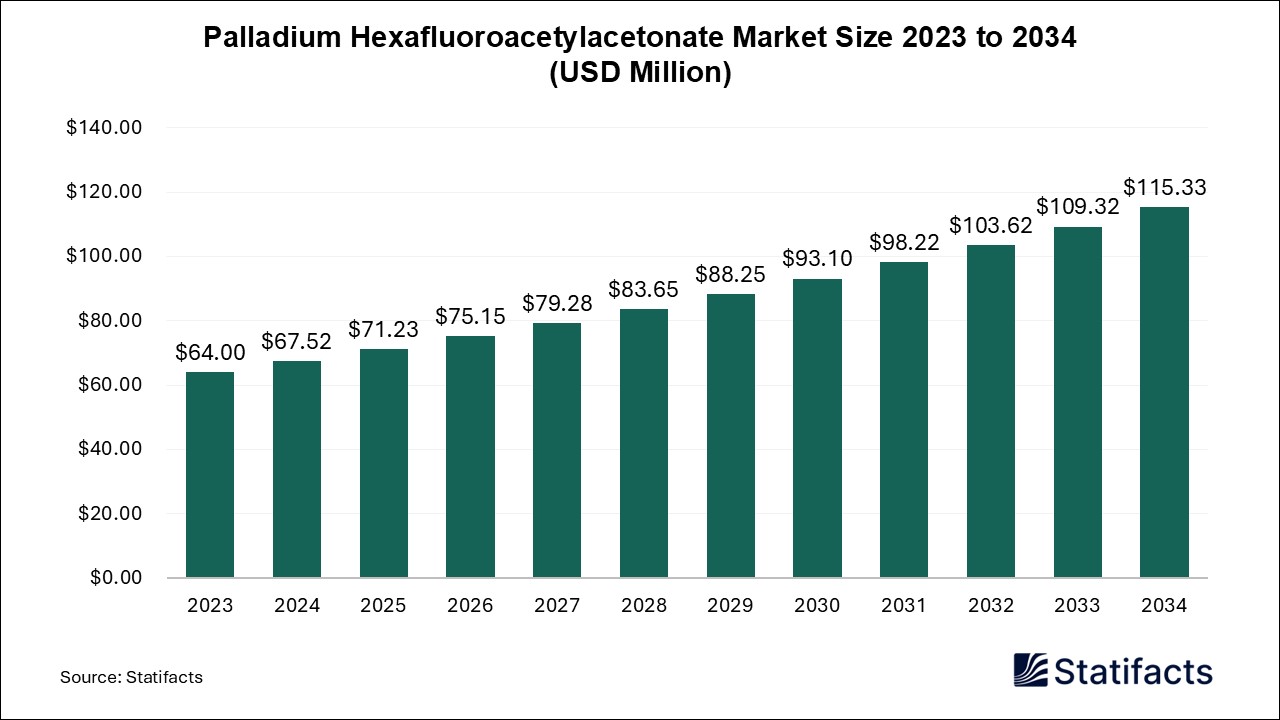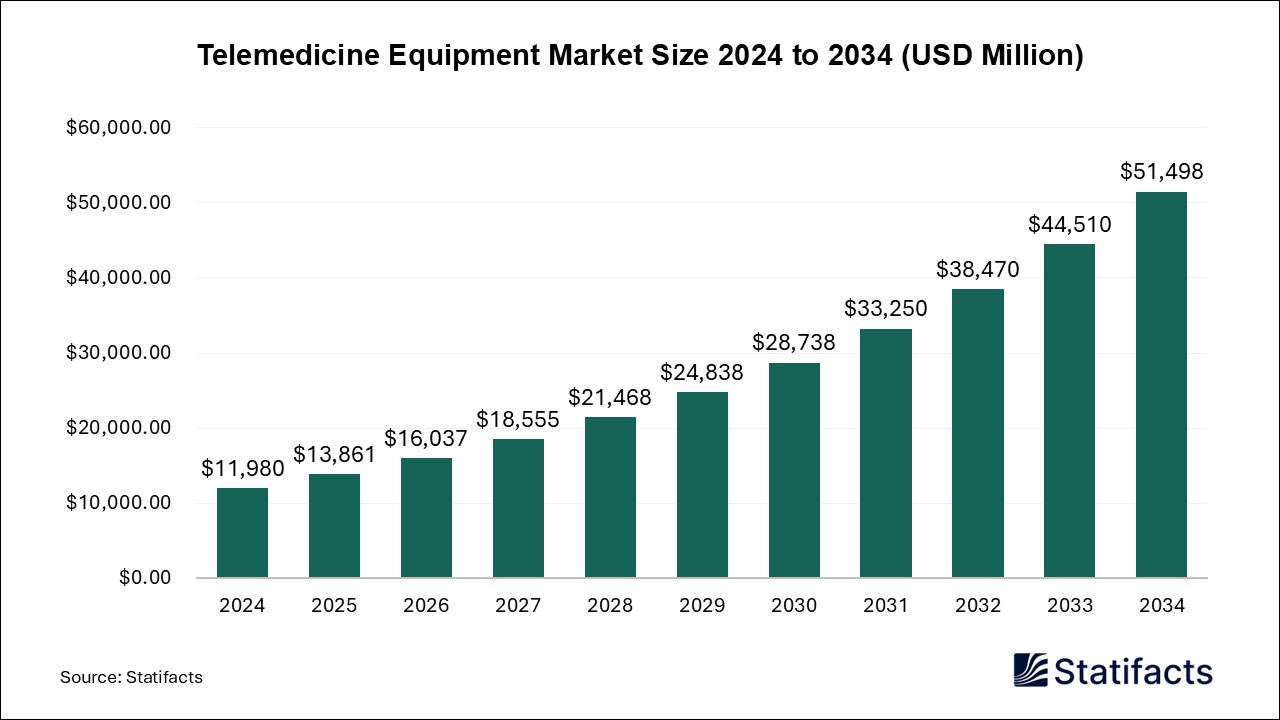Last Updated: 10 Jun 2025
Source: Statifacts
By clicking “Accept All Cookies” you agree to the storing of cookies on your device to enhance site navigation, analyze site usage, and assist in our marketing efforts.
Privacy PolicyThe global flow cytometry market size was evaluated at USD 5.71 billion in 2024 and is expected to grow around USD 12.02 billion by 2034, registering a CAGR of 7.72% from 2025 to 2034.
| Industry Worth | Details |
| Market Size in 2025 | USD 6.13 Billion |
| Market Size by 2034 | USD 12.02 Billion |
| Market Growth Rate from 2025 to 2034 | CAGR of 7.17% |
Flow cytometry is a technology that rapidly analyses single cells or particles as they flow past single or multiple lasers while suspended in a buffered salt-based solution. Each particle is analyzed for visible light scatter and one or multiple fluorescence parameters. The basic principle of flow cytometry is the passage of cells in single file in front of a laser so they can be detected, counted and sorted. Rising demand for point of care diagnostics, increase in the use of flow cytometry technologies in research activities, and technological advancements in flow cytometry instruments and reagents driving the growth of the flow cytometry market.
According to a report published in February 2024 by World Health Organization (WHO), in 2022, there were an estimated 20 million new cancer cases 9.7 million deaths. The estimated number of people who were allow within 5 years following a cancer diagnosis was 53.5 million. About 1 in 5 people develop cancer in their lifetime, approximately 1 in 9 men and 1 in 12 women die from the disease.
Artificial intelligence (AI) in imaging flow cytometry is used process the images or the time signal, generally to classify the particles/cells in two or more classes. AI in flow cytometry have been highly accurate and greatly reduce analysis variability compared to manual approaches. AI improves flow cytometry combines AI/ML algorithms with advanced analytics, allowing the interpretation of high dimensional data with unprecedented accuracy. Artificial intelligence and machine learning play an important role in data visualization and analysis.
Julie Sawyer Montgomery, Danaher Executive Vice President, said, “Precision medicines are more targeted than standard therapies and thus require precision diagnostics to determine which patients are most likely to benefit.” “We are excited to work with AstraZeneca on the goal of creating novel tests to increase access to precision medicines, helping ensure that no patients are left behind.”
Jeff Porter, vice president of Marketing at Agilent, said, “We are honored to receive these Scientists’ Choice awards from SelectScience and the scientific community.” “These recognitions reflect our commitment to empowering scientists with the tools and knowledge they need to drive discovery and innovation and bring great science to life.”
North America held the largest share of the flow cytometry market in 2024. Rising demand for point of care diagnostics, increase in use of floe cytometry technologies in research activities, and technological advancements in flow cytometry instruments and reagents driving the growth of the market in the North American region.
Asia Pacific is projected to host the fastest growing market in the coming years. Increasing awareness about the benefit of flow cytometry in diagnostics and research, growing demand for user friendly and automated flow cytometry systems in clinical laboratories, and increasing partnerships between industry players and academic institutions contributing to the growth of the flow cytometry market in the Asia Pacific region.
Over 60 countries where it operates. It operates in the diagnostics, biotechnology, and life sciences sectors around the world.
It operates in over 110 countries. It operates in the life sciences and healthcare sectors specially in research and diagnostics industry, around the world.
Published by Kesiya Chacko
Last Updated: 10 Jun 2025
Source: Statifacts
Last Updated: 10 Jun 2025
Source: Statifacts
| Subsegment | 2024 | 2025 | 2026 | 2027 | 2028 | 2029 | 2030 | 2031 | 2032 | 2033 | 2034 |
|---|---|---|---|---|---|---|---|---|---|---|---|
| Universities | 1,482.20 | 1,591.30 | 1,710.00 | 1,839.20 | 1,980.10 | 2,133.70 | 2,301.40 | 2,484.60 | 2,684.80 | 2,903.80 | 3,110.30 |
| Research Institutions | 1,284.80 | 1,381.70 | 1,487.30 | 1,602.50 | 1,728.20 | 1,865.50 | 2,015.50 | 2,179.60 | 2,359.30 | 2,556.10 | 2,741.50 |
| Pharmaceutical companies | 1,149.60 | 1,235.30 | 1,328.60 | 1,430.30 | 1,541.20 | 1,662.20 | 1,794.40 | 1,938.90 | 2,097.00 | 2,270.10 | 2,433.20 |
| Biotech | 1,015.50 | 1,088.80 | 1,168.50 | 1,255.20 | 1,349.60 | 1,452.40 | 1,564.50 | 1,686.70 | 1,820.30 | 1,966.10 | 2,103.80 |
| Other Institutions | 773.10 | 830.30 | 892.50 | 960.40 | 1,034.30 | 1,115.00 | 1,203.10 | 1,299.30 | 1,404.60 | 1,519.80 | 1,628.30 |
Last Updated: 10 Jun 2025
Source: Statifacts
| Subsegment | 2024 | 2025 | 2026 | 2027 | 2028 | 2029 | 2030 | 2031 | 2032 | 2033 | 2034 |
|---|---|---|---|---|---|---|---|---|---|---|---|
| Universities | 1,482.20 | 1,591.30 | 1710 | 1,839.20 | 1,980.10 | 2,133.70 | 2,301.40 | 2,484.60 | 2,684.80 | 2,903.80 | 3,110.30 |
| Research Institutions | 1,284.80 | 1,381.70 | 1,487.30 | 1,602.50 | 1,728.20 | 1,865.50 | 2,015.50 | 2,179.60 | 2,359.30 | 2,556.10 | 2,741.50 |
| Pharmaceutical companies | 1,149.60 | 1,235.30 | 1,328.60 | 1,430.30 | 1,541.20 | 1,662.20 | 1,794.40 | 1,938.90 | 2097 | 2,270.10 | 2,433.20 |
| Biotech | 1,015.50 | 1,088.80 | 1,168.50 | 1,255.20 | 1,349.60 | 1,452.40 | 1,564.50 | 1,686.70 | 1,820.30 | 1,966.10 | 2,103.80 |
| Other Institutions | 773.10 | 830.30 | 892.50 | 960.40 | 1,034.30 | 1115 | 1,203.10 | 1,299.30 | 1,404.60 | 1,519.80 | 1,628.30 |
To get full access to our Market Insights, you need a Professional Account or a Business Suite.

You will receive an email from our Business Development Manager. Please be sure to check your SPAM/JUNK folder too.

You will receive an email from our Business Development Manager. Please be sure to check your SPAM/JUNK folder too.

Our customers work more efficiently and benefit from



